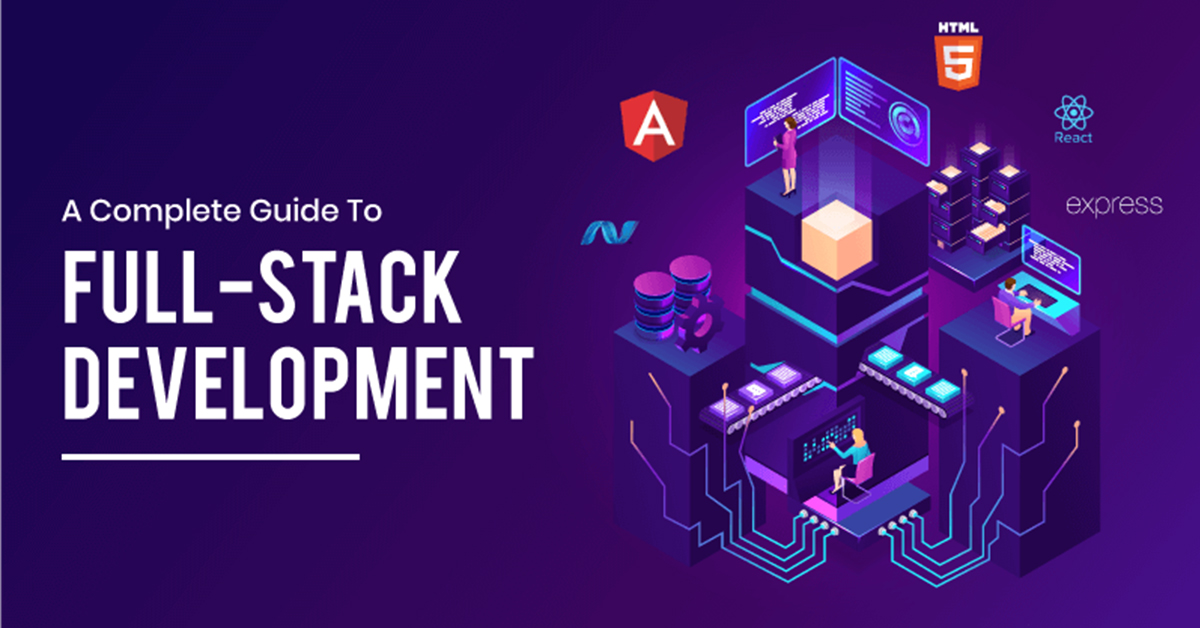
A Comprehensive Guide to Full-Stack Development Services
In today’s rapidly evolving tech landscape, businesses are constantly seeking ways to create robust and dynamic web applications. Full-stack development services have emerged as a go-to solution for building versatile and scalable digital platforms. In this comprehensive guide, we’ll explore what full-stack development is, the services it encompasses, the benefits it offers, and key considerations to keep in mind.
What is Full-Stack Development?
Full-stack development refers to the practice of developing both the front-end and back-end components of a web application. A full-stack developer is proficient in a range of technologies, including but not limited to:
Front-End Development: This involves creating the user interface and user experience (UI/UX) of a web application. Front-end technologies include HTML, CSS, and JavaScript, along with various frameworks and libraries like React, Angular, and Vue.js.
Back-End Development: The back-end is responsible for server-side operations, database management, and the logic that powers the application. Common back-end technologies include Node.js, Ruby on Rails, Python (Django/Flask), and Java.
Database Management: Storing and managing data is a critical aspect of full-stack development. Developers work with databases such as MySQL, PostgreSQL, MongoDB, or NoSQL databases like Cassandra.
Server Management: Understanding server architecture and deployment is essential. Full-stack developers often work with cloud services like AWS, Azure, or Heroku.
Version Control and Collaboration Tools: Knowledge of tools like Git for version control and collaboration platforms like GitHub is crucial for effective development teamwork.
Services Offered by Full-Stack Development
Full-stack development services encompass a wide range of activities to create, maintain, and scale web applications. Here are the core services typically offered:
1. Web Application Development
Full-stack developers build web applications from scratch, handling both front-end and back-end development. They ensure that the application is responsive, user-friendly, and functions seamlessly across different devices and browsers.
2. Custom Software Development
Full-stack development extends beyond web applications. It includes custom software development for specific business needs. This service is tailored to address unique challenges and requirements.
3. Mobile App Development
Many full-stack developers are skilled in cross-platform mobile app development, utilizing frameworks like React Native, Flutter, or Xamarin to create mobile applications that work on both iOS and Android.
4. E-commerce Solutions
Full-stack development services can include the creation of e-commerce platforms with features such as secure payment gateways, product catalogs, and shopping carts.
5. Content Management Systems (CMS)
Developers can build custom CMS solutions for clients, enabling easy content creation, publishing, and management for websites and applications.
6. API Development and Integration
Full-stack developers create APIs (Application Programming Interfaces) to allow seamless integration with third-party services, ensuring data exchange and functionality between systems.
7. Maintenance and Support
After the initial development phase, full-stack developers provide ongoing maintenance and support to ensure the application remains secure, up-to-date, and bug-free.
Benefits of Full-Stack Development Services
Investing in full-stack development services offers several advantages for businesses:
1. Cost-Efficiency
Hiring a full-stack developer who can handle both front-end and back-end tasks can reduce labor costs compared to hiring separate specialists.
2. Faster Development
Full-stack developers have a holistic view of the project, leading to faster development cycles and quicker time-to-market for products.
3. Seamless Communication
With a single developer or team handling both front-end and back-end aspects, communication is streamlined, reducing the chances of misalignment between different teams.
4. Versatility
Full-stack developers can adapt to various technologies and frameworks, making them versatile and capable of working on a wide range of projects.
5. Lower Maintenance Costs
Since the same team can handle maintenance and updates, businesses can save on long-term maintenance costs.
Key Considerations in Full-Stack Development
Conclusion
Full-stack development services offer a comprehensive solution for businesses looking to create web applications and custom software efficiently. With expertise in both front-end and back-end technologies, full-stack developers can streamline development, reduce costs, and provide versatile solutions. However, it’s crucial to select the right developer or team, consider scalability and security, and plan for ongoing maintenance to ensure a successful outcome for your project. By harnessing the power of full-stack development, businesses can stay competitive in the digital landscape and deliver exceptional user experiences.
0



